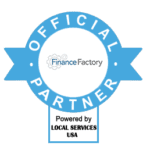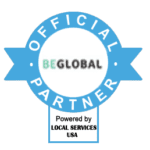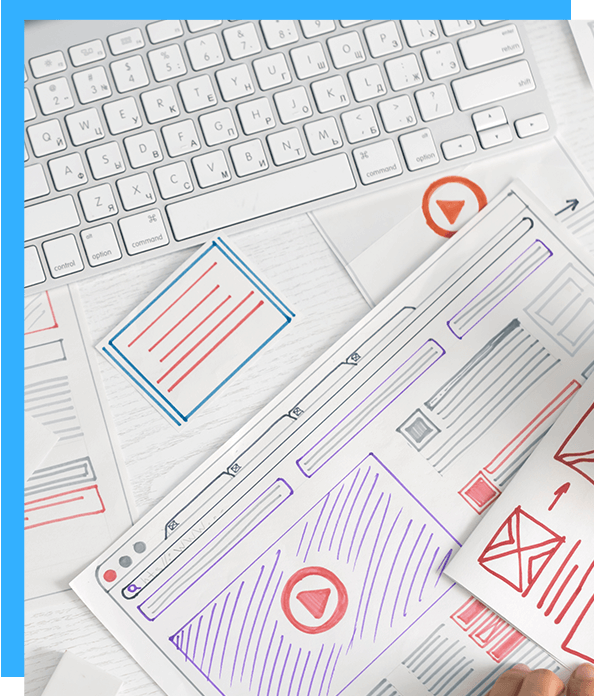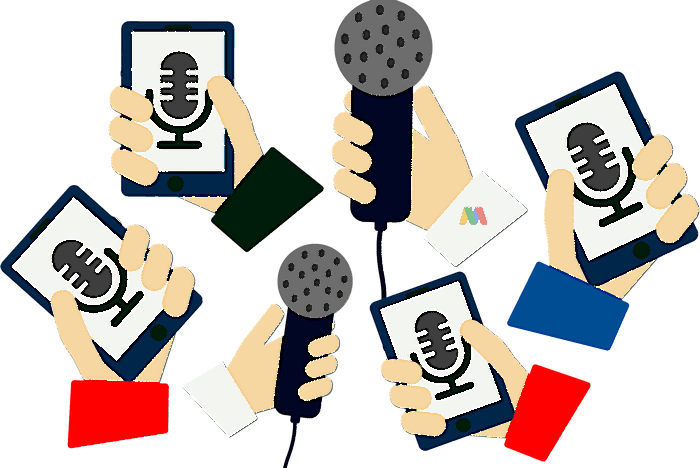Turn Website Visitors Into Paying Customers: Design A Professional-Looking Website Now!




















Unlock Untapped Potential for Your Business - Reach Half the World's Population Online!
- Over 3.2 Billion people online, with 275 million in the US alone
- 8 out of 10 consumers are likely to engage with your website if it has a website, and engaging with a Business also means trusting that business.
This includes your current customers and even future customers.
Well Optimized Website Design is Expensive & Time Consuming
According to Business Statistics


Less than 68% of small businesses own a functional website


23% of small business websites get updated every year


51% of all small businesses use in-house staff to maintain their website
A Highly-Converting Website
We specialize in providing custom-made websites that are designed for maximum user engagement and conversion. Using our knowledge and expertise, we craft stunning visuals paired with striking content that are tailored to the specific needs and objectives of our clients.
Our goal is to ensure that each website we create has bold call-for-actions placed strategically throughout the page, giving users the opportunity to take action and convert in record time.




Attractive Website
Our professional designers will work closely with you and your team to create a website that reflects the personality of your business and helps build trust with your customers. We use cutting-edge technology and processes to bring this vision to life. Our goal is to provide you with a website that looks and feels amazing, one that captivates your audience from the very first visit.
A Website that's Discoverable on Search Engines
Our team of experts are fully trained and experienced in all aspects of website optimization, from creating a transparent structure that can be easily read by search engine crawlers to utilizing meta-tags, headings and image tagging for maximum exposure.




Top-Notch Accessibility
Our team of expert web developers are dedicated to creating an accessible online experience for everyone. Not only will this help you stay in compliance with the ADA, but it will also ensure everyone has the same opportunity to use your website regardless of any disabilities they may have.
The Most-Advanced Tech Team is Here to Serve You
We provide cutting-edge website solutions and content writing to our clients across the globe. We understand the importance of having a strong online presence and how it affects your business and brand recognition. With us, you can create modern, responsive and beautiful websites that are powered by various platforms such as WordPress, Wix, Mono Solutions and many more.




Attract High-Quality Traffic
Our service offers a wide range of services including website design and development, SEO, content creation, social media management, and much more. We take pride in our ability to create high-quality websites that attract and engage with customers across the globe while providing informative and helpful content. With us, you can have peace of mind knowing that your business is moving in the right direction.
Business Inc Online makes it easy for businesses of all sizes to generate more website traffic and leads. With our team of expert marketing professionals, we provide a comprehensive suite of services to help you create an effective digital marketing strategy.
Pricing & FAQ
Can you please share the pricing structure?
The overall pricing structure depends on multiple factors, including the number of pages, functionalities, design, content, etc.
For example, a 3-5 pages website development would cost anywhere between $500 and $800. This will also include content creation and design.
Can I host my website?
Yes! Or if needed, we'll host it for you.
What if I only require you to build a landing page?
Don't worry! We would love to build the landing page for you.
Do you build on all website editors?
Our developers build websites on almost all the major website building platforms like Wix, Weebly, Mono Solutions & WordPress.
Can you share more details about bundled packages with traffic?
Since we are a full-service digital marketing agency, we'd love to prepare a well-planned marketing strategy that aligns with your goals and helps you achieve the desired results.
Have more questions?
Contact Our experts Today!
We believe that a top-notch website is essential for any business to make an impact in the digital space. We specialize in helping businesses craft well-designed, user-friendly websites that are tailored to their individual needs and requirements. Our team includes experts from different disciplines such as web design, development, digital marketing, and analytics.


Our Experts are Ready to Help!
Connect with one of our Local Experts today and discuss your requirements. Free advice.


Want to connect with a marketing expert? Dial in!
123 - 456 - 7890


Innovative Web Design Service That Converts
In today's digital age, having a website is no longer a luxury, but a necessity for any business looking to establish an online presence. However, simply having a website is not enough to attract and retain customers. It's important to have a website that not only looks visually appealing but also converts visitors into customers. That's where innovative web design services come in. In this blog post, we're going to discuss how innovative web design services can help businesses increase their online presence, attract more customers and ultimately, achieve their business goals.
We'll explore the key elements of web design that contribute to a successful online presence, including a responsive design, clear navigation, user-friendly interface, and effective call-to-action. We'll also highlight the importance of keeping up with the latest design trends and technologies to stay ahead of the competition.
What is Web Design?
Web design has revolutionized the way businesses operate in the 21st century. It encompasses a wide range of skills and disciplines that are required to develop and maintain a website. With the rise of online marketing, web design has become a crucial component of any business that wants to establish a strong online presence. But what exactly is web design? In this blog post, we will explore the basics of web design, its importance, and the skills required to become a web designer.
Web design involves creating, designing, and maintaining websites. It is a complex process that requires knowledge of different elements such as layout, typography, graphics, color theory, and user experience (UX). A good web design not only looks visually appealing but also provides a seamless user experience, functionality, and accessibility.
What Our Client Says






What Are The Types of Web Design?
Web design is a crucial aspect of creating websites and online platforms. With the advent of technology and the internet, having an impressive online presence is more important than ever. Whether you are an entrepreneur, blogger, or just someone looking to create a website, understanding the different types of web design can help you make informed decisions about your online presence. In this blog post, we will explore the various types of web design and their respective features. From responsive web design to parallax scrolling, we will delve into the world of web design and provide you with a comprehensive guide to help you choose the best approach for your website.
Static Design
Static design refers to the creation of digital or physical designs that do not have any interactive or dynamic elements. It is a crucial aspect of graphic design, which focuses on creating visual communication materials that convey a specific message to the target audience. Static designs may include logos, brochures, flyers, posters, and other similar materials. The design process usually involves a combination of artistic creativity and technical skills to produce an aesthetically pleasing and effective design. A good static design should be visually appealing, easy to understand, and relevant to the brand or message it represents.
Dynamic or CMS (Content Management System)
Dynamic or CMS (Content Management System) is a powerful tool that allows individuals and businesses to easily manage and update their website content. With the ability to edit, create, and publish content in real-time, it enables website owners to keep their website relevant and up-to-date with ease. CMS is designed to be user-friendly, allowing non-technical users to create and publish content without any coding knowledge. Additionally, CMS offers a plethora of features and plugins that can enhance the website's functionality and improve its user experience. In today's fast-paced digital world, CMS is an essential tool for businesses and individuals who want to stay competitive and relevant in their industry.
E-commerce
E-commerce, also known as electronic commerce, refers to the buying and selling of goods and services through the internet. The rise of the internet has revolutionized the way businesses operate, and e-commerce has become a critical component of modern business strategy. E-commerce allows businesses to reach global audiences, reduce costs, and streamline operations. With the advent of mobile technology, e-commerce has become even more accessible, enabling customers to shop from anywhere at any time. However, with the benefits come challenges such as cybersecurity threats, logistics complexities, and the need for effective digital marketing strategies. As the world continues to embrace digital technology, e-commerce will undoubtedly continue to evolve and transform the way we do
business.
Single page
A single page is a webpage designed to provide a user with the necessary information on a single screen without requiring any scrolling. It is a great way to engage the user, ensuring they receive the information they need in a concise and visually appealing manner. A single page is designed to offer an intuitive user experience by presenting information in an organized and compelling way. It can be optimized for mobile devices, providing a seamless browsing experience for users on-the-go. In addition, a single page can be an excellent tool for marketing campaigns as it provides a clear call to action and encourages users to take action. Overall, a single page is an effective way to showcase your brand or products and services, while providing an engaging and satisfying user experience.
Liquid design
Liquid design refers to a web design approach that allows a website to be responsive and adaptable to different screen sizes and devices. It involves the use of flexible layouts, proportion-based grids, and scalable elements to ensure that a website looks visually appealing and functions optimally regardless of the screen size or device used.
Responsive design
Responsive design is a crucial element in modern web development. A responsive website adapts to the screen size of the device being used, ensuring that the user experience remains consistent across all devices, and avoiding the need to create separate versions of a website for different devices. This approach provides a seamless browsing experience for users, regardless of whether they are using a desktop computer, tablet, or mobile device. Furthermore, responsive design has become increasingly important for search engine optimization, as Google and other search engines prioritize mobile-friendly websites in their search results.
Ready to Grow? Get your FREE Quote Today!
Types of Design Layout
Design is an integral part of any business, whether it's a website, brochure or advertisement. The design layout is the foundation of any design project and defines the way in which the content is presented to the target audience. There are several types of design layouts, each with their unique features and advantages. Understanding the different types of design layouts is essential for anyone looking to create an effective and visually appealing design.
1.
The F layout
The F layout is a crucial design strategy utilized in web design that organizes essential page elements to draw the user's attention and increase website usability. This layout is based on the reading habits of users, where they read from left to right and top to bottom. The F pattern signifies the user's eye movement on a web page. The top section, which is the header, is where the logo and menu are placed.
2.
The Zigzag Layout
The Zigzag Layout is a popular design technique that is commonly used in various visual mediums, such as website and graphic design. This layout involves the use of diagonal lines that create a sense of movement and flow, guiding the viewer's eye through the design. The Zigzag Layout is an effective way to break up monotony and add interest to a design. It can also be used to highlight specific elements, such as images or call-to-action buttons.
3.
One Column Layout
A one column layout is a web design technique that utilizes a single column for displaying content on a webpage. It is a popular layout option for websites that prioritize simplicity, readability, and mobile responsiveness. The one column layout is ideal for websites that aim to provide a seamless user experience across different devices and screen sizes. This layout can also be useful for websites with a lot of text-based content or for blogs that require a clear hierarchy of information.
4.
Split Screen Layout
Split screen layout is a popular design technique used in web and app design that involves dividing the screen into two or more sections, each displaying different content. This layout is an effective way to present multiple types of information or content simultaneously, allowing the user to view and compare them easily without switching between different pages or screens. Split screen layout also provides a balanced and visually appealing composition that can enhance the user experience. However, it is essential to use this layout carefully and strategically to ensure that the content is clear, organized, and easy to navigate.
5.
Featured Image Layout
The featured image layout is a crucial element in any website or blog design. It is the first visual element that your audience will see and can make a significant impact on their first impression. It is essential to choose an appropriate image that resonates with the content and engages the audience. The featured image layout should be visually appealing and complement the overall design of the website. It should be positioned in a prominent place on the page, enabling the audience to notice it easily. Additionally, it should be optimized for different screen sizes for a seamless viewing experience across various devices. The featured image layout is a vital component in creating an effective and memorable online presence.


We have financed over
3 BILLION+
for our clients
Discover how we can help your business.


Web Design Principles
As technology continues to evolve, web design has become a critical aspect of any business’s online presence. An aesthetically pleasing website that’s easy to navigate is essential to attract and retain customers. Web design principles aim to make websites visually appealing and user-friendly, leading to better performance, increased traffic, and higher conversion rates.
Web design principles encompass a range of factors, including layout, color, typography, and imagery. However, it’s important to note that principles are not rules set in stone. Instead, they are guidelines that help designers create effective and engaging websites that meet a user’s needs.
Color
Color is an essential element in design and communication. It has the power to evoke emotions, create moods, and convey meanings. As professionals in design, it's crucial to understand the psychology and impact of color on the audience. Color theory is a fundamental aspect of design, and it involves understanding the color wheel, color relationships, and color harmonies. A good designer knows how to use color effectively to create a balance, contrast, and unity in their designs. Furthermore, they must consider cultural associations with color and how it can affect their message in different regions.
Balance
Balance is an essential concept in both personal and professional life. It is the state of equilibrium achieved through the harmonious integration of different elements such as work, family, health, and leisure. In the corporate world, balance is critical for achieving productivity and avoiding burnout. Employees who are overworked and stressed tend to be less creative, less engaged, and more prone to errors. A balanced work-life is also essential to maintain mental and physical health. In personal life, balance helps individuals prioritize their goals, manage their time effectively, and maintain healthy relationships.
Navigation
Navigation is a crucial aspect of modern life, enabling people to chart courses and reach destinations successfully. Navigation involves the use of various tools, such as maps, compasses, GPS devices, and other electronic gadgets, to determine one's location and plot a course to a desired destination. It is an essential skill for pilots, sailors, hikers, and drivers, among others, and requires a high level of technical knowledge and expertise.
Letter Spacing
Letter spacing is an essential aspect of typography that refers to the amount of space between individual letters in a word. It plays a crucial role in the readability and legibility of text, as well as the overall aesthetic appeal of a design. Proper letter spacing can improve the clarity and flow of text, making it easier for readers to comprehend and retain information. On the other hand, inadequate letter spacing can lead to confusion and difficulty in reading.
Alignment
Alignment is a critical aspect of any successful project or initiative. It refers to the congruence between the goals, strategies, and actions of different individuals, teams or departments within an organization. Effective alignment ensures that everyone is working towards the same objectives, and that there is clarity on how each person's contribution fits into the bigger picture. To achieve alignment, it is essential to establish clear communication channels, set measurable goals, and provide regular feedback and updates.
Visual Hierarchy
Visual hierarchy is a fundamental principle in graphic design that involves organizing and prioritizing information on a page in a way that guides the viewer's eye. This concept is essential in creating effective communication and enhancing user experience. The use of various design elements such as color, size, contrast, and placement can help establish a clear visual hierarchy that communicates the importance of each element on a page.
Typography
Typography is the art and technique of designing and arranging type in order to make written language legible, readable, and appealing when displayed. It is an essential element of graphic design, advertising, and marketing, and plays a crucial role in creating a brand identity. Good typography can elevate a message and enhance its impact, while poor typography can detract from it. Understanding the attributes of typefaces, such as size, weight, spacing, and style, is crucial to achieving effective typography.
Contrast
Contrast is a powerful tool that can be used to highlight differences and create visual interest in many design disciplines. By juxtaposing elements with varying characteristics, contrast can help to draw attention to the most important aspects of a design and create a sense of hierarchy. In graphic design, contrast can be achieved through differences in color, size, shape, texture, and more. When used effectively, contrast can help to create a harmonious and balanced composition that is visually appealing and easy to understand.
Usability
Usability is a critical aspect of any product or service that aims to enhance user experience. It refers to the ease with which users can interact with a system or interface to accomplish their desired tasks effectively and efficiently. In the digital age, usability has become increasingly important as consumers expect seamless and intuitive experiences across various devices and platforms. To achieve good usability, designers must understand user needs, behavior, and preferences, and incorporate those insights into the design process.
Consistency
Usability is a critical aspect of any product or service that aims to enhance user experience. It refers to the ease with which users can interact with a system or interface to accomplish their desired tasks effectively and efficiently. In the digital age, usability has become increasingly important as consumers expect seamless and intuitive experiences across various devices and platforms. To achieve good usability, designers must understand user needs, behavior, and preferences, and incorporate those insights into the design process.
Grids
Grids are an essential aspect of design, providing structure and order to layouts. They consist of intersecting horizontal and vertical lines that create a framework for elements to be placed on a page. By using grids, designers can achieve a cohesive and balanced composition, ensuring that elements are aligned and spaced evenly. Grids can be tailored to suit different design needs, from simple and minimalistic to complex and multi-layered. They are widely used in print and digital media, including websites, magazines, and books.
Simplicity
It is advisable always to put users into consideration when designing a website. Users should be able to quickly understand the concept of the webpage when they see it without being told. For instance, when a person tries to navigate Facebook, the simple icons on it are easy to understand because the image there already depicts what we would expect.
Web Design Elements
Web design is the process of creating visually appealing and user-friendly websites that cater to the specific needs of users. Designing a website requires attention to detail, creativity, and a solid understanding of design principles:
- Shape
- Line
- Fonts
- Space
- Form
- Color
- Texture
- Images
- Value
- Content
- Icons
- Animation
- Imagery
- Header
- Breadcrumb navigation
Ready to speak with our experts?
Looking For Funding
$3,000,000,000
in funding Secured For Clients
Get Clients Through Our
$15,000,000+
CLIENT ACQUISITION DATABASE
Accelerate your ROI by
200-1000%
FROM OUR DIGITAL CHAT BOT SERVICE
Increase Brand Awareness with
2,200,000+
SOCIAL MEDIA & JOURNALIST ACCOUNTS
Why Is Good Web Design So Important?
In today's digital age, where the majority of businesses operate online, having a website that showcases your brand is crucial. Your website is often the first point of contact for potential customers, making it imperative that you create a positive first impression. Good web design can make all the difference when it comes to attracting and retaining visitors to your site. It is not just about aesthetics and visuals, but also about user experience, functionality and accessibility.
A well-designed website can help establish your credibility and professionalism, increase your online visibility and ultimately drive more business. It can also help differentiate you from your competitors and create a strong brand identity. With the ever-increasing competition online, having a website that stands out and engages your audience is essential.
Uses of a Web Design
In today's digital age, having a functional and well-designed website is crucial for any business or brand looking to thrive in the online world. With the rise of e-commerce, social media, and other online platforms, it's essential to have a web design that is not only aesthetically pleasing but also user-friendly and functional. A web design can make or break a brand's online presence, and it's important to understand the various uses of a web design to maximize its potential.
User Experience Optimization
User Experience Optimization is a process of improving the overall user experience of a website or application. It involves making the interface more intuitive, user-friendly, and aesthetically pleasing. The ultimate goal of User Experience Optimization is to enhance user satisfaction and engagement, which in turn leads to increased conversions and revenue.
Branding
Branding is an essential part of any successful business. It is the process of creating a unique identity for your company that sets it apart from competitors in the market. Effective branding communicates your company's values, mission, and personality to your target audience. A strong brand creates emotional connections with customers, helps to establish trust, and drives loyalty.
Conversion
Conversion is a crucial aspect of any online business or marketing campaign. It refers to the percentage of visitors who take a desired action, such as making a purchase, filling out a form, or subscribing to a newsletter. The goal of conversion optimization is to increase the number of visitors who take these actions, thereby improving the overall ROI of the campaign.
Improve Sales
Improving sales is a critical aspect of any business. It requires an in-depth understanding of the market, customer requirements, and the company's strengths and weaknesses. To enhance sales, it is crucial to identify the target audience and offer value propositions that cater to their needs. Developing a comprehensive sales strategy that outlines sales objectives, sales team goals, and sales tactics can help achieve the desired results.
Customer Satisfaction
Customer satisfaction is paramount to the success and longevity of any business. It is the measure of how well a company meets or exceeds the expectations of its customers. Achieving high levels of customer satisfaction requires a deep understanding of the needs and wants of the customer, effective communication, and a commitment to providing exceptional service.
Search Engine Optimization
Search Engine Optimization (SEO) is a crucial aspect of digital marketing that aims to improve website visibility in search engine results pages. It involves optimizing the structure, content, and coding of a website to enhance its relevance and authority for targeted keywords. The objective of SEO is to increase organic traffic to a website, which in turn, can drive conversions and revenue growth for businesses.
Mobile Responsiveness
Mobile responsiveness is a vital aspect of modern web design that cannot be ignored. With the majority of internet users accessing websites on their mobile devices, it is essential that websites be designed in a manner that is easily accessible and navigable on these devices. A mobile-responsive website is one that automatically adjusts to the size of the screen it is being viewed on, ensuring that all content, images, and menus are easily visible and accessible.
Skills Used in Web Design
Web design is a fast-paced and constantly evolving field. With new technologies and emerging design trends, it's important for web designers to stay up-to-date with the latest skills and techniques. Whether you are a seasoned pro or just starting out, having a solid foundation in the essential skills of web design is crucial to creating successful websites.
1.
Hard Skills
Hard skills are specific, teachable abilities that can be measured and tested. These skills are typically acquired through formal education, training programs, or on-the-job experience. Examples of hard skills include proficiency in a particular software application, technical knowledge in a particular field, or the ability to operate specialized equipment.
Visual Design
Visual design is essential to creating a successful brand identity and user experience. It is the art of creating visual elements that communicate a message to the viewer. A good visual design should be aesthetically pleasing, easy to navigate, and effectively communicate the intended message. It should also be consistent across all platforms and mediums. The use of color, typography, layout, and imagery are all important in creating an effective visual design.
UX
When it comes to designing successful digital products, user experience (UX) plays a pivotal role. UX encompasses all aspects of a user's interaction with a product, including usability, accessibility, and overall satisfaction. It requires a thorough understanding of user behavior, needs, and preferences to design interfaces that are intuitive, efficient, and enjoyable to use. To ensure a positive UX, designers must conduct research, gather feedback, and test their designs rigorously.
Graphic Design / Web Design Software
Graphic design and web design software are essential tools for professionals in the creative industries. With a wide range of software available, designers can choose from programs that offer diverse features and capabilities. Adobe Photoshop and Illustrator are two of the most widely used graphic design software options, with a variety of tools for creating logos, icons, and other graphics. For web design, Adobe Dreamweaver, Sketch, and Figma are popular choices.
HTML (Hypertext Markup Language)
HTML, or Hypertext Markup Language, is the standard markup language used for creating web pages. It is a cornerstone technology for the World Wide Web and is responsible for the structure and content of web pages. HTML allows developers to create structured documents by using a set of markup tags and attributes to define the layout and content of a page. This markup language is constantly evolving to support new web technologies and to improve the user experience.
CSS (Cascading Style Sheets)
CSS, or Cascading Style Sheets, is a fundamental part of front-end web development. It is a style language used to describe the layout and appearance of HTML documents. CSS allows developers to separate the presentation layer from the content layer, making it easier to maintain and update websites. It offers a wide range of styling options, including font styles, colors, background images, and layout properties.
Javascript
As a widely used programming language, Javascript has become an essential tool for web developers seeking to create dynamic and interactive user experiences. Its versatility allows for seamless integration with HTML and CSS to create dynamic web pages and applications. With a plethora of resources available, Javascript offers a wealth of functionality, including event handling, asynchronous programming, and object-oriented programming.
2.
Soft Skills
Soft skills refer to the personal qualities and characteristics that enable individuals to work effectively with others. These skills are an essential part of any professional's toolkit, as they help to create a positive work environment and foster effective communication. Soft skills include interpersonal skills, such as communication, teamwork, and empathy, as well as personal attributes like adaptability, time management, and a positive attitude.
Skills Used in Web Design
Management
When it comes to business success, effective management is critical. It involves guiding and directing employees towards achieving the goals of the organization. Good managers are skilled at delegating tasks, communicating effectively, and providing clear direction. They have a deep understanding of the strengths and weaknesses of their team, and work to nurture their employees' talents while also identifying areas for improvement. Effective management also involves making important decisions, setting priorities, and creating a positive work culture.
Communication
Effective communication is a critical aspect of professional success. It involves the exchange of information, ideas, and thoughts between individuals or groups, with the aim of achieving a common objective. Communication skills play a vital role in building relationships, fostering collaboration, and achieving desired outcomes. Verbal and nonverbal communication, active listening, and empathy are just a few of the key elements that contribute to effective communication.
SEO
SEO or search engine optimization is a crucial marketing strategy that aims to improve a website's visibility and ranking in search engine results. It involves optimizing website content, structure, and coding to make it more attractive to search engines and improve its relevance to users' search queries. The ultimate goal of SEO is to drive more organic traffic to the website and increase its conversion rates.
Creativity
Creativity is a universal trait that businesses and individuals strive to cultivate. It is not only about generating new ideas, but also about being able to look at things from a different perspective and finding innovative solutions to problems. The ability to think creatively can lead to greater success in a variety of industries, from advertising and marketing to music and fashion.
Problem-solving Skills
Problem-solving skills are essential for success in any professional setting. It is the ability to identify and analyze problems, develop creative solutions and implement them effectively that sets apart successful professionals from the rest. A good problem solver is able to break down complex problems into manageable parts, gather relevant information, and evaluate possible solutions objectively.
Teamwork and Research skills
Teamwork and research skills are essential in any professional setting. In order to achieve success, it is important to be able to work effectively with others and collaborate towards a common goal. This involves being able to communicate clearly, delegate tasks, and provide support to team members.
Attention To Detail
Attention to detail is a crucial attribute in the professional world. It involves paying close attention to every aspect of a task and ensuring that all requirements have been met with precision and accuracy. Professionals who possess this quality are highly valued as they are able to produce work that is of the highest quality and meets the expectations of clients and customers.
Imaginative Skills
Imaginative skills refer to an individual's ability to think creatively and come up with unique solutions to problems. In today's fast-paced and ever-changing business landscape, imaginative skills are becoming increasingly important for success. These skills enable individuals to think outside of the box and approach challenges with a fresh perspective. They also help people to identify opportunities that others may overlook. Developing imaginative skills requires practice and exposure to new experiences and ideas.
Adaptability
Adaptability is a crucial skill that is essential for success in any professional setting. Being adaptable means being able to adjust and respond to changing circumstances, whether it be in the workplace or in one's personal life. It is important to be able to identify the need for change and to be willing to embrace it. A professional who is adaptable is able to thrive in dynamic environments and is better equipped to handle unexpected challenges.
Organizational Skills
Organizational skills refer to the ability to efficiently manage time, resources, and information to achieve specific goals or objectives. It is a crucial skill set that is highly valued in the workplace, as it enhances productivity, efficiency, and overall effectiveness. Effective organizational skills involve prioritization, planning, delegation, and multitasking. These skills enable individuals to work systematically and strategically, minimizing errors and maximizing output.
Conclusion
In conclusion, having a winning website is key to a successful online presence. It requires a combination of great design, user-friendly navigation, quality content, and reliable functionality. By following the best practices outlined in this post and continuously monitoring and refining your website, you can ensure that it offers a positive experience for your visitors and helps you achieve your business goals. With the right approach and mindset, building a winning website can be a fun and rewarding experience.





















































































